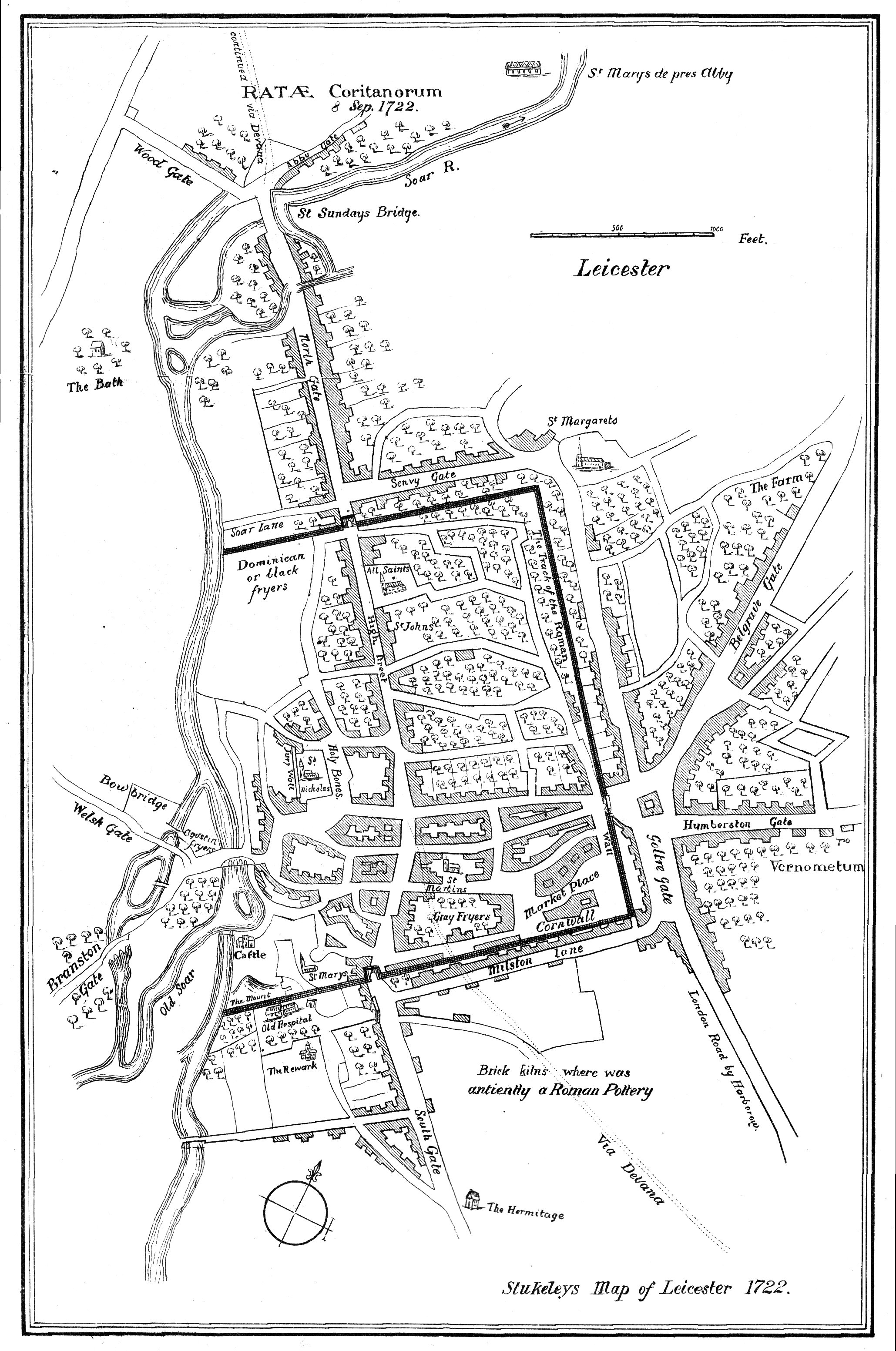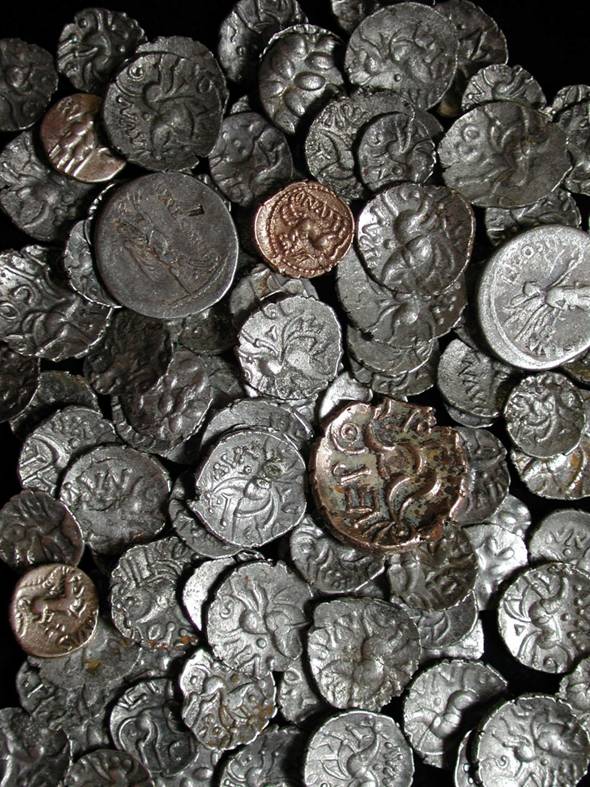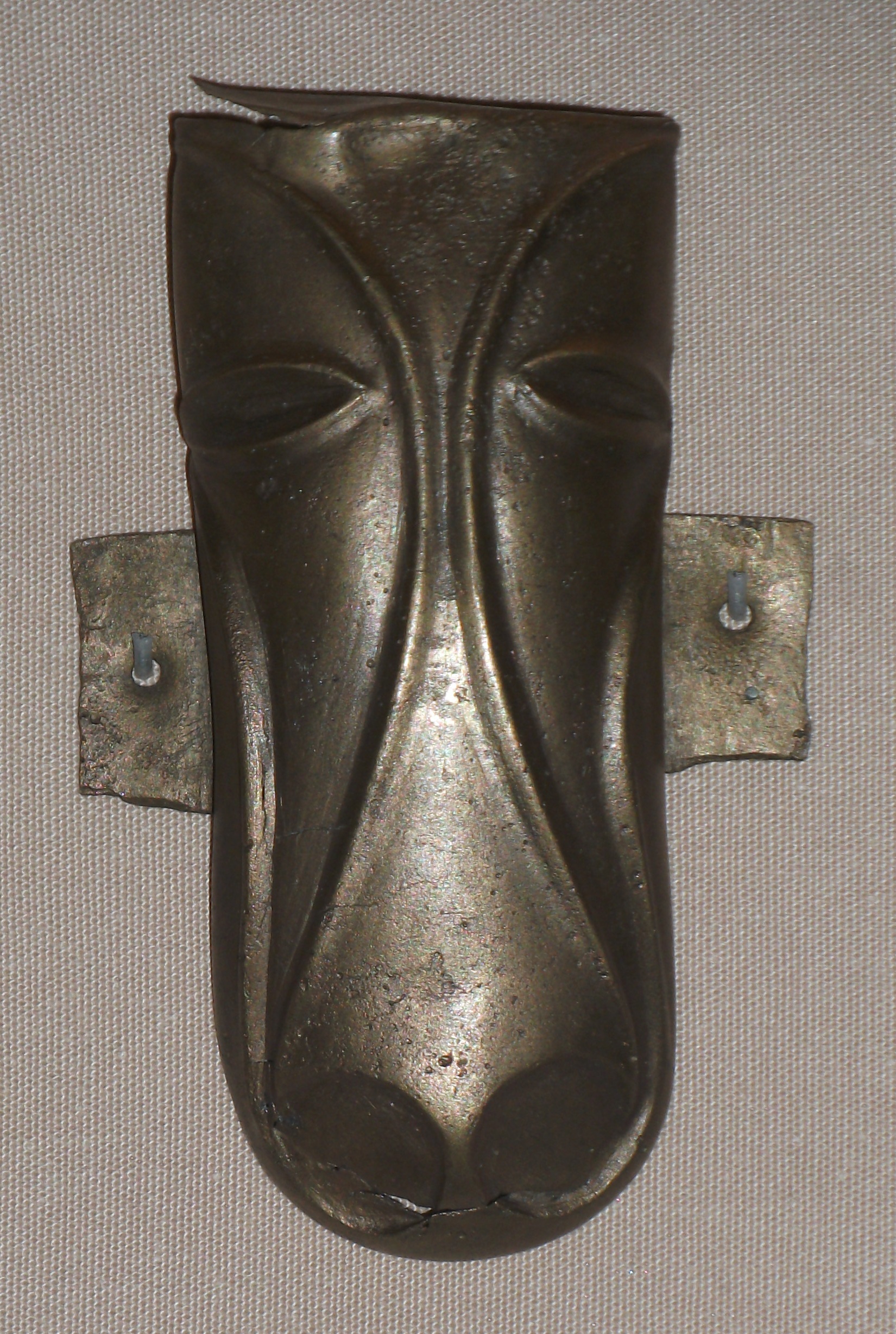|
Corieltauvi
The Corieltauvi (also the Coritani, and the Corieltavi) were a tribe of people living in Britain prior to the Roman conquest, and thereafter a ''civitas'' of Roman Britain. Their territory was in what is now the English East Midlands. They were bordered by the Brigantes to the north, the Cornovii to the west, the Dobunni and Catuvellauni to the south, and the Iceni to the east. Their capital was called ''Ratae Corieltauvorum'', known today as Leicester. Late Iron Age The Corieltauvi were a largely agricultural people who had few strongly defended sites or signs of centralised government. They appear to have been a federation of smaller, self-governing tribal groups. From the beginning of the 1st century, they began to produce inscribed coins: almost all featured two names, and one series had three, suggesting they had multiple rulers. The names on the earliest coins are so abbreviated as to be unidentifiable. Later coins feature the name of Volisios, apparently the paramount king ... [...More Info...] [...Related Items...] OR: [Wikipedia] [Google] [Baidu] |
Leicester
Leicester ( ) is a city status in the United Kingdom, city, Unitary authorities of England, unitary authority and the county town of Leicestershire in the East Midlands of England. It is the largest settlement in the East Midlands. The city lies on the River Soar and close to the eastern end of the National Forest, England, National Forest. It is situated to the north-east of Birmingham and Coventry, south of Nottingham and west of Peterborough. The population size has increased by 38,800 ( 11.8%) from around 329,800 in 2011 to 368,600 in 2021 making it the most populous municipality in the East Midlands region. The associated Urban area#United Kingdom, urban area is also the 11th most populous in England and the List of urban areas in the United Kingdom, 13th most populous in the United Kingdom. Leicester is at the intersection of two railway lines: the Midland Main Line and the Birmingham to London Stansted Airport line. It is also at the confluence of the M1 motorway, M1/M ... [...More Info...] [...Related Items...] OR: [Wikipedia] [Google] [Baidu] |
Sleaford
Sleaford is a market town and Civil parishes in England, civil parish in the North Kesteven district of Lincolnshire, England. Centred on the former parish of New Sleaford, the modern boundaries and urban area include Quarrington, Lincolnshire, Quarrington to the south-west, Holdingham to the north and Old Sleaford to the east. The town is on the edge of the fertile The Fens, Fenlands, north-east of Grantham, west of Boston, Lincolnshire, Boston, and south of Lincoln, England, Lincoln. Its population of 17,671 at the United Kingdom Census 2011, 2011 Census made it the largest settlement in the North Kesteven district; it is the district's administrative centre. Bypassed by the A17 road (England), A17 and the A15 road (England), A15, it is linked to Lincoln, Newark-on-Trent, Newark, Peterborough, Grantham and King's Lynn. The first settlement formed in the Iron Age where a prehistoric track crossed the River Slea. It was a tribal centre and home to a mint for the Corieltauvi i ... [...More Info...] [...Related Items...] OR: [Wikipedia] [Google] [Baidu] |
Ratae Corieltauvorum
Ratae Corieltauvorum or simply Ratae was a town in the Roman province of Britannia. Today it is known as Leicester, located in the English county of Leicestershire. Name ''Ratae'' is a latinate form of the Brittonic word for "ramparts" (cf. Gaelic '' rath''), suggesting the site was an Iron Age oppidum. This generic name was distinguished by "of the Corieltauvians", the name of the Celtic tribe whose capital it served as under the Romans. The town was mistakenly known as Ratae Coritanorum in later records. However, an inscription recovered in 1983 showed that it was corrupt and "Corieltauvorum" was the proper form of the name. History Prehistory The native settlement encountered by the Romans at the site seems to have developed in the 2nd or 1st centuries BC. This area of the Soar was split into two channels: a main stream to the east and a narrower channel on the west, with a presumably marshy island between. The settlement seems to have controlled a ford across the l ... [...More Info...] [...Related Items...] OR: [Wikipedia] [Google] [Baidu] |
Hallaton Treasure
The Hallaton Treasure, the largest hoard of British Iron Age coins, was discovered in 2000 near Hallaton in southeast Leicestershire, England, by volunteers from the Hallaton Fieldwork Group. The initial find was made by Ken Wallace on 19 November 2000, when he found about 130 coins with a metal detector. Along with local community archaeologists, the University of Leicester, University of Leicester Archaeological Services (ULAS) excavated what turned out to be one of the most important Iron Age excavations and community archaeology projects in Britain. The hoard includes over 5,000 silver and gold coins, a silver-gilt Hallaton Helmet, Roman parade helmet, jewellery, and other objects. Most of the items date to around the time of the Roman conquest of Britain in the 1st century AD. Of the coins from the site, 4,835 can be attributed to the local tribe, the Corieltauvi. This find more than doubled the total number of Corieltauvian coins already recorded. A silver Roman ... [...More Info...] [...Related Items...] OR: [Wikipedia] [Google] [Baidu] |
Walkington
Walkington is a village and civil parish in the East Riding of Yorkshire, England. It is situated approximately to the south-west of the town of Beverley on the B1230 road, and Beverley Grammar School. The civil parish is formed by the village of Walkington and the hamlet of Broadgate. According to the 2011 UK census, Walkington parish had a population of 2,337, a reduction on the 2001 UK census figure of 2,481. To the east of the village is Broadgate, the site of a former mental hospital, named Broadgate Hospital. Another part of the former Broadgate Farm estate has been developed into a complex of holiday cottages named Broadgate Farm Cottages. The village has three public houses located along the main road, East End, the Barrel, the Ferguson Fawsitt Arms, and the Dog and Duck. Ferguson closed its doors on 4 October 2020 due to the coronavirus pandemic, although it reopened under new owners in early 2022. In the centre of Walkington is the village pond. The village sch ... [...More Info...] [...Related Items...] OR: [Wikipedia] [Google] [Baidu] |
Cornovii (Midlands)
The Cornovīī (Common Brittonic: *''Cornowī'') were a Celtic people of the Iron Age and Roman Britain, who lived principally in the modern English counties of Cheshire, Shropshire, north Staffordshire, north Herefordshire and eastern parts of the Welsh counties of Flintshire, Powys and Wrexham. Their capital in pre-Roman times was probably a hillfort on the Wrekin. Ptolemy's 2nd-century ''Geography'' names two of their towns: Deva Victrix (Chester) and Viroconium Cornoviorum (Wroxeter), which became their capital under Roman rule. Their territory was bordered by the Brigantes to the North, the Corieltauvi to the East, the Dobunni to the South, and the Deceangli, and Ordovices to the West. The people who inhabited the very north of the British mainland (modern Caithness), and Cornwall were also known by the same name, but according to mainstream or academic opinion were quite separate and unrelated peoples. (see list of ancient Celtic peoples and tribes). The problem of trib ... [...More Info...] [...Related Items...] OR: [Wikipedia] [Google] [Baidu] |
Coraniaid
The Coraniaid are a race of beings from Welsh mythology. They appear in the Middle Welsh prose tale ''Lludd and Llefelys'', which survives in the ''Mabinogion'' and inserted into several texts of the ''Brut y Brenhinedd'', a Welsh adaptation of Geoffrey of Monmouth's ''Historia Regum Britanniae''. The Coraniaid figure in the tale as one of three Plague (disease), plagues that affect Great Britain, Britain during the reign of King Lludd. They are characterized by a sense of hearing so acute that they can hear any word the wind touches, making action against them impossible. Name and description The name ''Coraniaid'' appears to be related to the Welsh word ''corrach'' (plural ''corachod''), translated as "dwarf (mythology), dwarf", and its adjective form ''corachaidd'', translated as "stunted" or "dwarfish". Middle Welsh orthographical variants include ''Coranyeit'' and ''Coranneit''. In the tale, the Coraniaid cannot be injured because their hearing is so sharp that they can hear ... [...More Info...] [...Related Items...] OR: [Wikipedia] [Google] [Baidu] |
Brigantes
The Brigantes were Ancient Britons who in pre-Roman times controlled the largest section of what would become Northern England. Their territory, often referred to as Brigantia, was centred in what was later known as Yorkshire. The Greek geographer Ptolemy named the Brigantes as a people in Ireland also, where they could be found around what is now Wexford, Kilkenny and Waterford, while another people named ''Brigantii'' is mentioned by Strabo as a sub-tribe of the Vindelici in the region of the Alps. Within Britain, the territory which the Brigantes inhabited was bordered by that of four other peoples: the Carvetii in the northwest, the Parisii to the east and, to the south, the Corieltauvi and the Cornovii. To the north was the territory of the Votadini, which straddled the present day border between England and Scotland. Etymology The name ''Brigantes'' (Βρίγαντες in Ancient Greek) shares the same Proto-Celtic root as the goddess Brigantia, ''*brigant-'' meaning ... [...More Info...] [...Related Items...] OR: [Wikipedia] [Google] [Baidu] |
Dobunni
The Dobunni were one of the Iron Age tribes living in the British Isles prior to the Roman conquest of Britain. There are seven known references to the tribe in Roman histories and inscriptions. Various historians and archaeologists have examined the Dobunni, including Stephen J. Yeates in his book ''The Tribe of Witches'' (2008), where he suggests that the latter part of the name possibly derives from *''bune'', a cup or vessel, with a similar meaning to the later tribal name Hwicce; both being related to the recognisable cult of a Romano-British goddess. This view has been sharply criticised by several archaeologists. Archaeologist Miles Russell suggests that their original name may have been "Bodunni", connecting this with the Celtic word ''*bouda'' meaning "Victorious", in the sense of "The Victorious Ones". Territory The tribe lived in central Britain in an area that today broadly coincides with the English counties of Bristol, Gloucestershire and the north of Somerset, altho ... [...More Info...] [...Related Items...] OR: [Wikipedia] [Google] [Baidu] |
Catuvellauni
The Catuvellauni (Common Brittonic: *''Catu-wellaunī'', "war-chiefs") were a Celtic tribe or state of southeastern Britain before the Roman conquest, attested by inscriptions into the 4th century. The fortunes of the Catuvellauni and their kings before the conquest can be traced through ancient coins and scattered references in classical histories. They are mentioned by Cassius Dio, who implies that they led the resistance against the conquest in AD 43. They appear as one of the ''civitates'' of Roman Britain in Ptolemy's ''Geography'' in the 2nd century, occupying the town of Verlamion (modern St Albans) and the surrounding areas of Hertfordshire, Bedfordshire and southern Cambridgeshire. Their territory was bordered to the north by the Iceni and Corieltauvi, to the east by the Trinovantes, to the west by the Dobunni and Atrebates, and to the south by the Regni and Cantiaci. Name The name 'Catuvellauni' (Common Brittonic: *''Catu-wellaunī/Catu-uellaunī'', 'war-chiefs, ... [...More Info...] [...Related Items...] OR: [Wikipedia] [Google] [Baidu] |
Iceni
The Iceni ( , ) or Eceni were a Brittonic tribe of eastern Britain during the Iron Age and early Roman era. Their territory included present-day Norfolk and parts of Suffolk and Cambridgeshire, and bordered the area of the Corieltauvi to the west, and the Catuvellauni and Trinovantes to the south. In the Roman period, their capital was Venta Icenorum at modern-day Caistor St Edmund. Julius Caesar does not mention the Iceni in his account of his invasions of Britain in 55 and 54 BC, though they may be related to the Cenimagni, whom Caesar notes as living north of the River Thames at that time. The Iceni were a significant power in eastern Britain during Claudius' conquest of Britain in AD 43, in which they allied with Rome. Increasing Roman influence on their affairs led to revolt in AD 47, though they remained nominally independent under king Prasutagus until his death around AD 60. Roman encroachment after Prasutagus' death led his wife Boudica to launch a major revolt from 6 ... [...More Info...] [...Related Items...] OR: [Wikipedia] [Google] [Baidu] |
East Midlands
The East Midlands is one of nine official regions of England at the first level of ITL for statistical purposes. It comprises the eastern half of the area traditionally known as the Midlands. It consists of Leicestershire, Derbyshire, Lincolnshire (except North and North East Lincolnshire), Northamptonshire, Nottinghamshire and Rutland. The region has an area of , with a population over 4.5 million in 2011. The most populous settlements in the region are Derby, Leicester, Lincoln, Mansfield, Northampton and Nottingham. Other notable settlements include Boston, Buxton, Chesterfield, Corby, Coalville, Gainsborough, Glossop, Grantham, Hinckley, Kettering, Loughborough, Louth, Market Harborough, Matlock, Newark-on-Trent, Oakham, Skegness, Wellingborough and Worksop. With a sufficiency-level world city ranking, Nottingham is the only settlement in the region to be classified by the Globalization and World Cities Research Network. The region is primarily served ... [...More Info...] [...Related Items...] OR: [Wikipedia] [Google] [Baidu] |








